For some reason the middle of the 16th century seem to be a period where portraits of sisters became popular. With slight differences in clothing, or contrastingly the same, and with still, almost dead faces, these classically stiff late 16th century depictions have come to enchant me.
They do, in their creepy lifeless way, remind me of the 19th century photographs of dead family members that was a fashion at the time. Let me show you the early modern ones I have found and tell you a little about who the portrayed people are:
Golden girls Isabella & Catalina
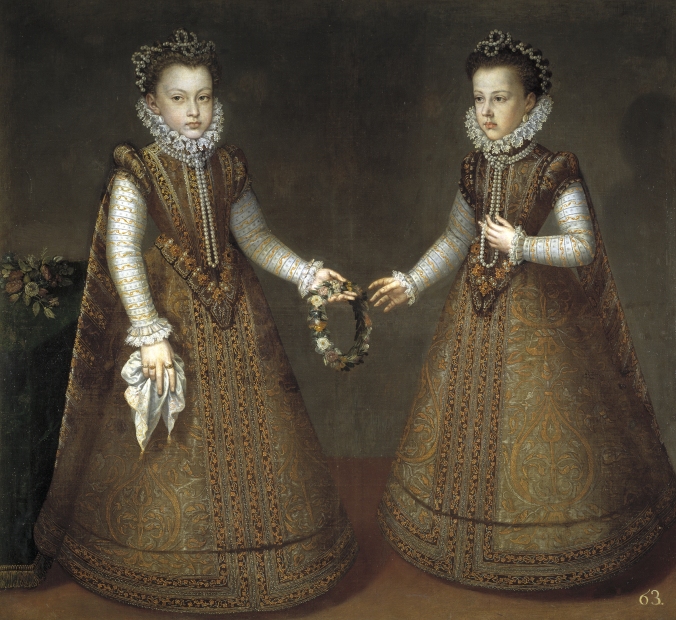
Sisters Isabel Clara Eugenia and Catalina Micaela, by Alonso Sánchez Coello, 1575.
This beautiful cone shaped sister portrait shows Isabella Clara Eugenia (left) who would later become the queen of Spain, and Catalina Micaela (right) who would become queen of Austria. With only one year between the sisters they are very close in age in this picture, 10 and 9 years old. Both sisters were intensely loved by their father Philip II of Spain.
Isabella – clever & always daddy’s girl
The older sister Isabella had an eventful life. She was all her life very much a daddys girl, and the only one her father would allow close enough to be his private secretary, and she handled important matters of the state during her fathers illness the last three years of his life. You go girl!
Isabella was most of her life betrothed to the holy roman emperor Rudolf II, who luckily enough broke the engagement when Isabella Clara was 20 years old. Isabella thereby dodged a bullet unknowingly, because Rudolf would later in his life go bonkers with mental illness, and die alone and dethroned in Prague 1612.
Isabellas father didn’t give up on his precious daughter and sorted out a marriage with Albert VII, at the time a cardinal. Albert threw away his priestly robes and married Isabella Clara 1599. Isabella’s life would be one of war and peace, her reign is considered the Golden Age of the Spanish Netherlands. The couple never had any children and Isabella ended her years in a nunnery.
Catalina – the arrogant art lover
Isabellas sister Catalina was famous for being beautiful, arrogant, intelligent and quite snobbish, all too aware of her high social status. Traits that didn’t always make her popular. She was married to the hunky war mongering Charles Emmanuel I, Duke of Savoy in 1585. The couple never had any children. Despite Catalina’s horrid personality she eventually developed diplomatic and political skills, loving culture and founded many new buildings including an art gallery.
Dark sisters Anne & Elizabeth
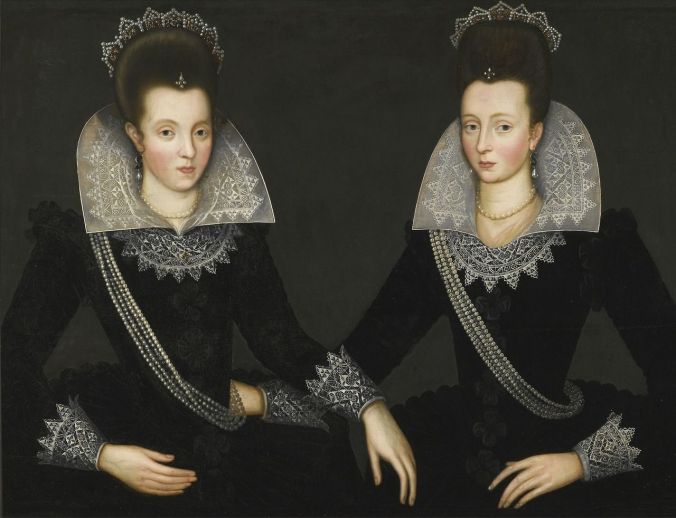
“Portrait of two sisters” probably Anne of Denmark and her sister Elizabeth, by Robert Peake the elder, around 1580.
These two pretty birds in black are two danish sisters, daughters of the Frederick II of Denmark. We see Elizabeth looking slightly constipated with her arm around her sisters back to the right, and a pale Anne to the left with her hand om her sisters leg.
Elizabeth – jokster husband & a lot of fun in the sack
There is not much information about the childhood of Elizabeth of Denmark, the oldest of the two. She was originally intended to marry the not so hunky but still infamous James VI. But strangely enough, it was decided that her sister Anne would be a better match for the limey king. And Elizabeth 1590 instead got handed the duke Henry Julius of Brunswick-Lüneburg who turned out to be quite the jester. At their wedding, before they had ever met, funny Henry Julius disguised himself as a jeweler. He presented Elizabeth with some fine bling, and when she asked the cost he told her “the prize was her body”. Obviously the joker was immediately thrown in jail until he managed to prove his identity and explain that it had been a gag.
Despite this being their first encounter, Elizabeth married Henri Julius and they must have had a happy marriage – it resulted in 10 kids surviving infancy! But funny Harry didn’t last long, and died 1616. Elizabeth remained unmarried and was busy with politics, having to actively remove her oldest son Friederich Ulrich, him being a ravaging alcoholic, and instead kept regency til the end of her days.
Anne – party girl & toxic fights
Anne of Denmark, seen to the left, we know quite a lot about thanks to her famous husband. She was, as we know, betrothed to the English king James VI at the age of 14. Apparently Anne was very happy with the engagement, reported as being “so far in love with the King’s Majesty as it were death to her to have it broken off and hath made good proof divers ways of her affection which his Majestie is apt enough to requite.” As we can read into this quote, Anne had no clue that James VI was famous for “playing for the other team”, that being probably homosexual or most definately bisexual.
The marriage did take place in 1589 with Anne at the age of 15. The couple seem to have been happy at first, and Anne was popular at her new court. The Venetian envoy, Nicolo Molin, wrote this description of Anne in 1606:
She is intelligent and prudent; and knows the disorders of the government, in which she has no part, though many hold that as the King is most devoted to her, she might play as large a role as she wished. But she is young and averse to trouble; she sees that those who govern desire to be left alone, and so she professes indifference. All she ever does is to beg a favour for someone. She is full of kindness for those who support her, but on the other hand she is terrible, proud, unendurable to those she dislikes.
But James soon took to other lovers, as did Anne, and James grumpily later described marriage as “the greatest earthly felicitie or miserie, that can come to a man”. In fact, the marriage turned into constant fighting. Anne led a cosmopolitan life with dancing at parties and James luckily preferred the countryside so the two rarely spent time together. When they did the couple fought constantly, from management of the household to religion, and Anne accused the king of being a drunkard: “the King drinks so much, and conducts himself so ill in every respect, that I expect an early and evil result.”
Despite these issues with an unhappy marriage Anne and James did have 7 children together. But when their oldest son Henry Frederick died at the age of 18, their marriage turned even icier and Anne withdrew from social life. James on the other hand found a new hobby in witch hunting, writing his own Demonologie in 1597 and personally attending the torture of women accused of witchcraft. Charming!
All though Anne died as a very unpopular queen next to a very unpopular king, she is remembered as a patron of the arts and she played a crucial role in the political with ambassadors and foreign visitors. She died at the age of 44 at 1619, and was buried next to her husband.
Anne & Mary in matchy black and white
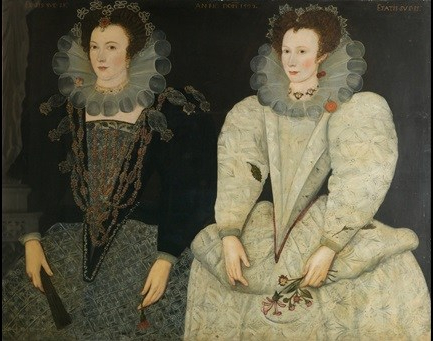
Portrait of Anne Newdigate and Mary Fitton, 1592.
In this puffy and ruffled black and white double portrait we see the older sister Anne in black and the younger sister Mary in white, the fortuned daughters of Lady Alice and Sir Edward Fitton.
Anne – the financial goodie two shoes
Anne Fitton (in black in the painting) was the sensible older sister and was married off at the tender age of twelve, a marriage that seem to have been a happy enough as it resulted in five children. Anne was famous for being a gentlewoman, financial genius and an avid letter writer.
Many of Anne’s account books and letters have survived, and they reveal her role as the financial manager of her household and the respect she had among her peers. She had a great deal of affluent pen pals at court and many of her correspondences are around the court gossip concerning her little sister Mary’s erotic escapades.
Anne became a widow in 1610 and rejected all marriage proposals. Instead she directed her efforts into taking care of her children, and match making them into good marriages. She kept being a active letter writer until the day she died in 1618.
Scandalous & unstable Mary – Shakespeares “dark lady?”
Mary Fitton (in white in the picture) became a maid of honour to Queen Elizabeth in about 1595 with the help of a friend of her father, the much older Sir William Knollys who solemnly promised to take care of Mary at court, as if she was his own daughter. But old git Knollys soon broke that promise as he couldn’t keep his sticky fingers away from Mary, and despite him being already married Knollys kept slobbering over Mary so such an extent that he was mocked at court for it. Mary didn’t seem to cope well with this situation (who can blame her?) and in 1599 she had to go back home after suffering from mental illness and hysteria.
But in 1600 Mary was back at court and was soon noted for being a party girl and seductress with many scandalous affairs at court. One of them led to Mary being pregnant, and both her and her bae were dismissed from court. And the love child sadly died shortly after birth.
Life after court was no less scandalous and Mary kept having flings with married men, and bearing them children. Eventually even Mary caved in, marrying an officer who she outlived on a small welsh property. After her death in 1647 her ghost is reputed to haunt the Gawsworth Hall, where she was buried.
The rumours that Mary could’ve been the inspiration for a Shakespeare sonnet Fair Youth, stems from an 19th century biographer who probably made his own assumptions. But who knows? Maybe Mary had a fling with the greatest writer of all times?
In bed with the Cholmondeley Ladies
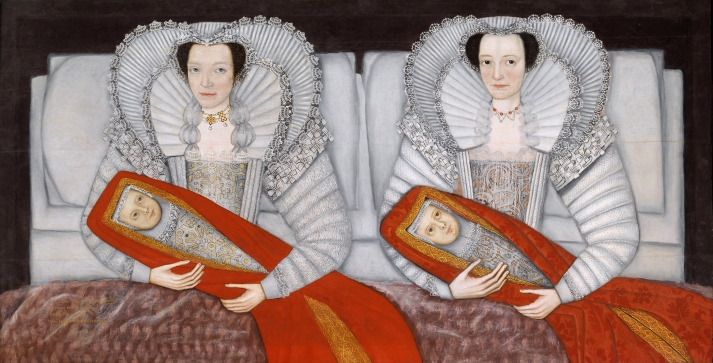
“The Cholmondeley ladies”, unknown artist , around 1600.
This surprisingly modern looking english early 17th century painting is by an unknown artist. An inscription in gold on the bottom left says “Two Ladies of the Cholmondeley Family, Who were born the same day, Married the same day, And brought to Bed the same day.”
At first glance the bedded two sisters look completely identical, almost twins. But if you look closer you soon realize they have slightly different details in their clothing, and also different eye colors (brown and blue) which mean they cant be identical twins. The pose of the two gals is not something we find in paintings of that period, and mostly resembles contemporary tomb sculpture. Creepy!
Mysterious duo
Strangely, who these sisters exactly was is not completely sure. Its been suggested they are the two daughters of Sir Hugh Cholmondeley (1513-1596) and Lady Mary Cholmondeley (died 1563-1625), wife of George Calveley. In that case the sisters we see are Lettice and her sister Mary.
Mary we don’t know anything about, except the inscription on the painting if that information is true. But the older sister Lettice we know married Sir Richard Grosvenor, 1st Baronet. Lettice gained fame in her own right for her lawsuit against her uncle George Holford over the inheritance of her father’s estates. A lawsuit she also won. Good girl!
Ginger twins Sara & Elizabeth
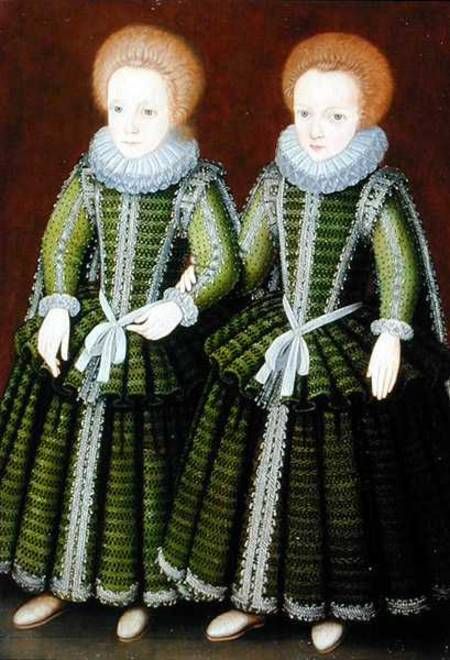
Portrait of Sarah and Elizabeth Poulett, by unknown artist, late 16th century.
Finally a toddler painting, with two pale ginger sisters in matching dark velvet green dresses! This painting is also shrouded in mystery, or the facts around it has at least been forgotten. I cant seem to find anything about these gingettes, part from a portrait of Elizabeth Poulett by RoBert Peake, which could be the same Elizabeth as in the sisters painting above. Elizabeth married the baron Johan Poulett and nothing is said about her, part from the children they had together.
Who is who?
The mysterious Sarah I cant find anything about. I find a person with her name on a genealogy site. If this is our Sarah, then their father was Amias Poulett (also named Paulett), an english diplomat. Strangely enough, Amias had two daughters called Elizabeth and Sarah, but here it is claimed that Elizabeth died unmarried – completely contrary to the Elizabeth Poulett I found first. Amias daughter Sarah did marry Sir Francis Vincent, 1st Baronet.
The confusion is real! I’ve decided not to venture further with the gingers. The truth is most certainly somewhere out there.
Two dandelion sisters
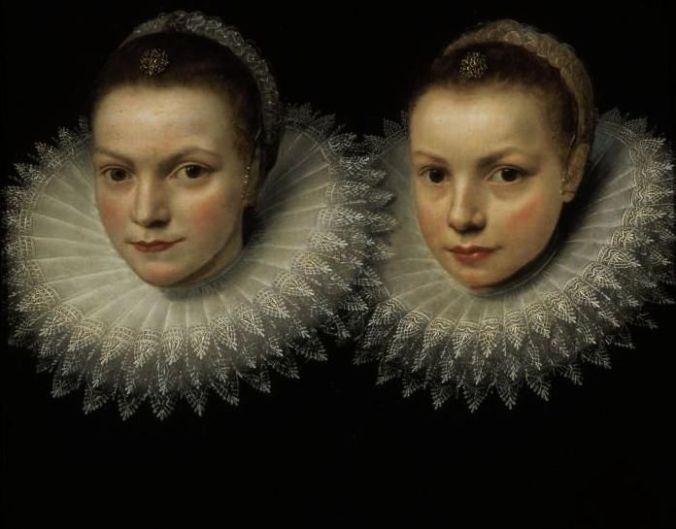
“Two sisters” by Cornelis de Vos, 1615
This absolutely delightful painting of two sisters almost floating in darkness on their two classic 17th century collars looking like puffed white dandelions about to be scattered in the winds. (I would love to have this painting on my wall at home).
Yet again nothing is known about these sisters, but we know a great deal about the painter Cornelis de Vos. He was a successful Flemish painter known for his sensitive portraits, in particular of families and also his own children. He was being commissioned all over Europe and had quite a successful life.
But the sisters are shrouded in mystery. We can only guess the background of these two beauties.
The armed Kuve twins
-
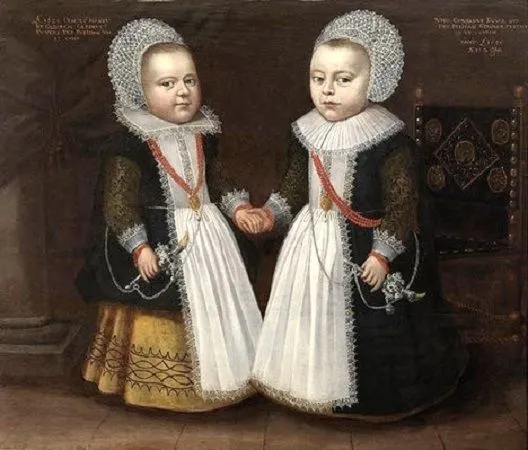
The Kuve twins, by anonymous artist, 1630.
More babies! This time it’s the Kuve toddlers. The two-year-old twins Gerdrugt and Conradus Kuve are standing steadily together gripping each others hands and holding some sort of silver objects I can’t really figure out what they are. Daggers? Baby swords?
I cant find anything on these two cutie pies so we just have to enjoy the painting as it is.
The deceased swaddled twins
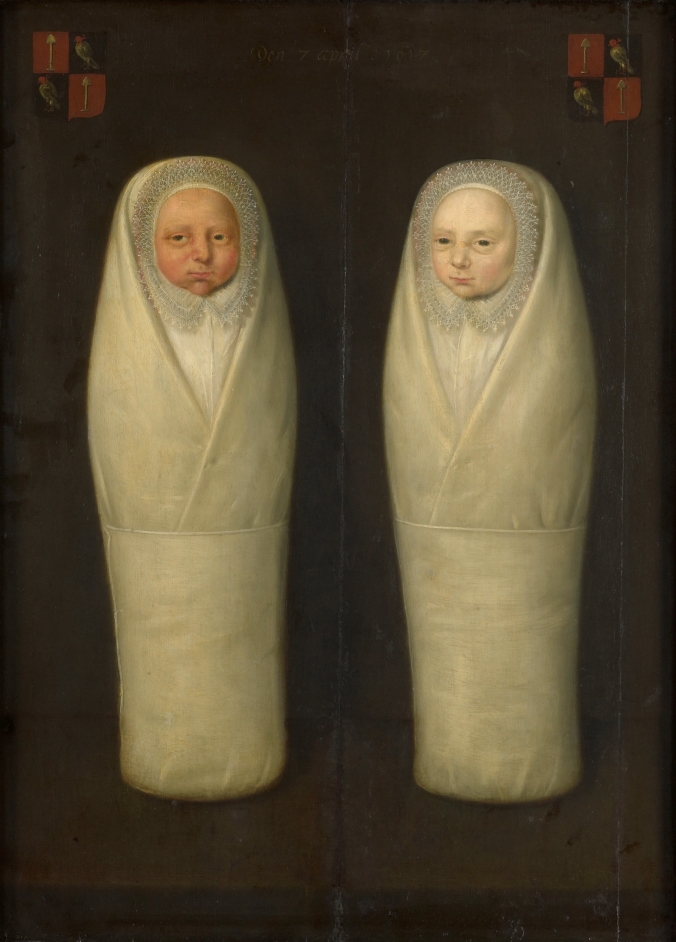
Alright, its time for a sadder note. Painted in 1617 put part from that nothing is known about these little nuggets except who their parents were. This painting is a memorial of the baby twins sadly leaving this earth together. They are the early-deceased children of flemish Jacob de Graeff and Aeltge Boelens.
Naughty naked nipple sisters
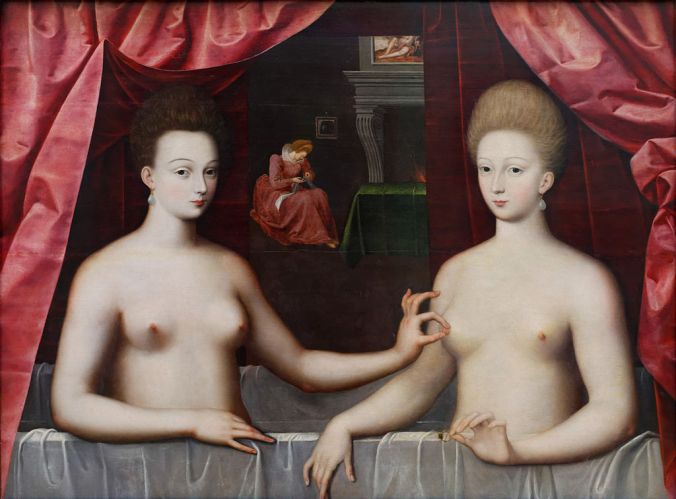
“Gabrielle d’Estrées and her sister” by unknown artist, 1594.
These two raunchy ladies in a bath is Gabrielle d’Estrées to the right getting the nipple pinched – Gabrielle was the favorite mistress of king Henry IV. And the lady doing the pinching to the left is one of Gabrielles sisters, the Duchess de Villars.
So what the heck is going on here? A modern viewer might interpret it simply an 16th century lesbo nudie meant to catch the eye of the king, but as always there are many hidden symbols in this painting. The nipple pinching have been suggested as a symbol for Gabrielle being pregnant with an out-of-wedlock child of king Henry IV. The woman in red in the background seem to confirm this, as she is sowing a layette.
What we do know is that Gabrielle was indeed the kings paramour most of her life, patiently waiting for the him to ditch his official wife, Marguerite de Valois. Gabrielle lived very close to the king and even became his most important diplomat, with her own seat at the kings council. She even bore him three children (all of them actually legitimized by the king, well done Henry!). But the intense love affair with the king eventually led to Gabrielle’s death before the age of thirty, dying while pregnant with their fourth child, in 1599.
The king was grief-stricken when his Gabby died and reputedly wore black in mourning, something no previous French monarch had done. He gave Gabrielle a funeral fit for a queen – her coffin was transported in a fancy funeral procession of princes, princesses, and nobles all thru Paris.
Why is Gabrielle holding a ring in her hand in the painting? It could be the very coronation ring that king Henry gave Gabrielle as a token of his loyalty to her just years before she died.
What about the other sister in the painting? She was the youngest in the family, given the tongue twister name Julienne-Hippolyte-Joséphine. We do not know much about her, part from fact that she might have had a harder time getting the menses than her sister. Rumor says that Julienne had to bribe a priest into to marrying her to a man called George de Brancas. Despite the rough start, the couple probably had a decent marriage with three kids. Julienne died at the awe-inspiring age of 92.
There we have it
Those are the sister paintings that I have found and been intrigued by. I do not find these types of mirrored sister portraits during early half of the 16th century, so they do seem to be something favored during the late 16th century and early 17th century. The later 17th century and 18th century do have a lot of sisters and siblings portraits but they are much more lively, colorful and contrasted to each other.
If you have any more of these sister portraits of the 16th or 17th century, please let me know in the commentary.
















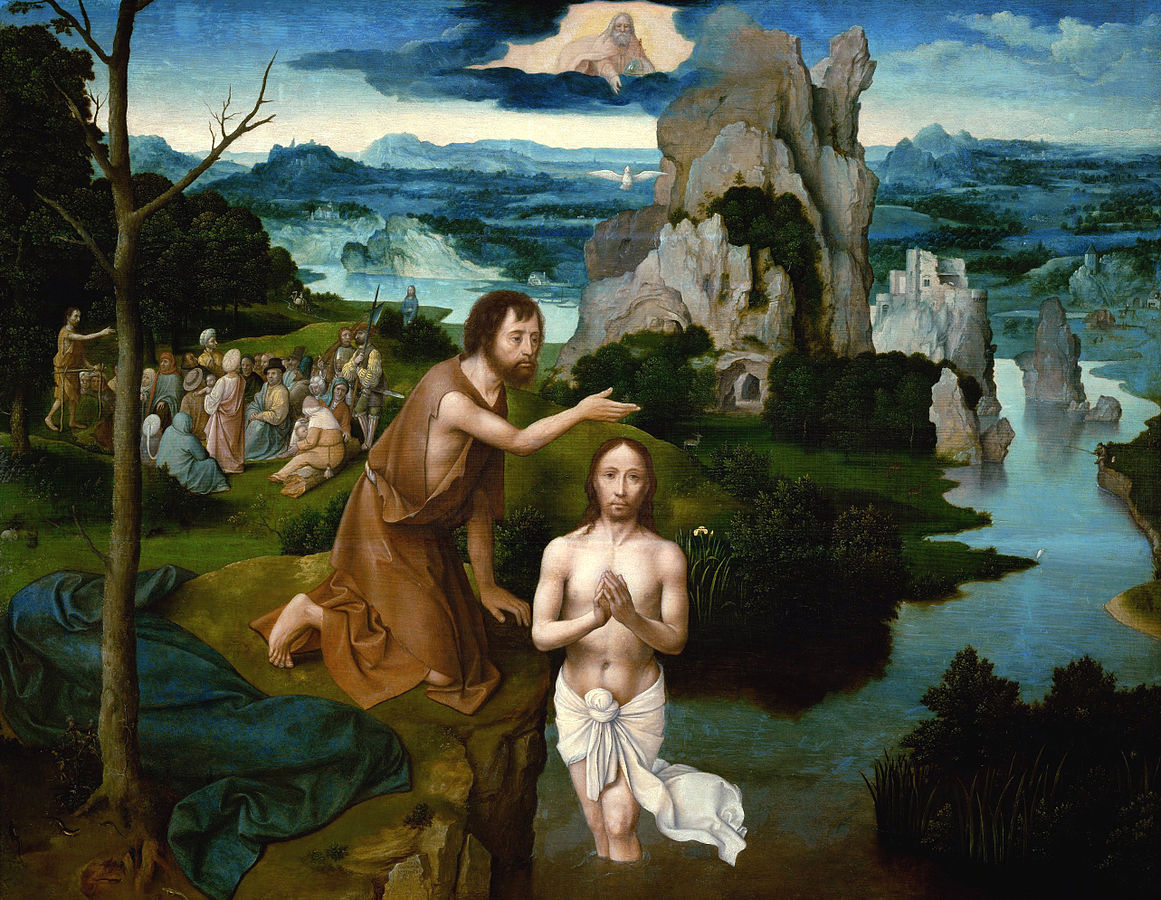





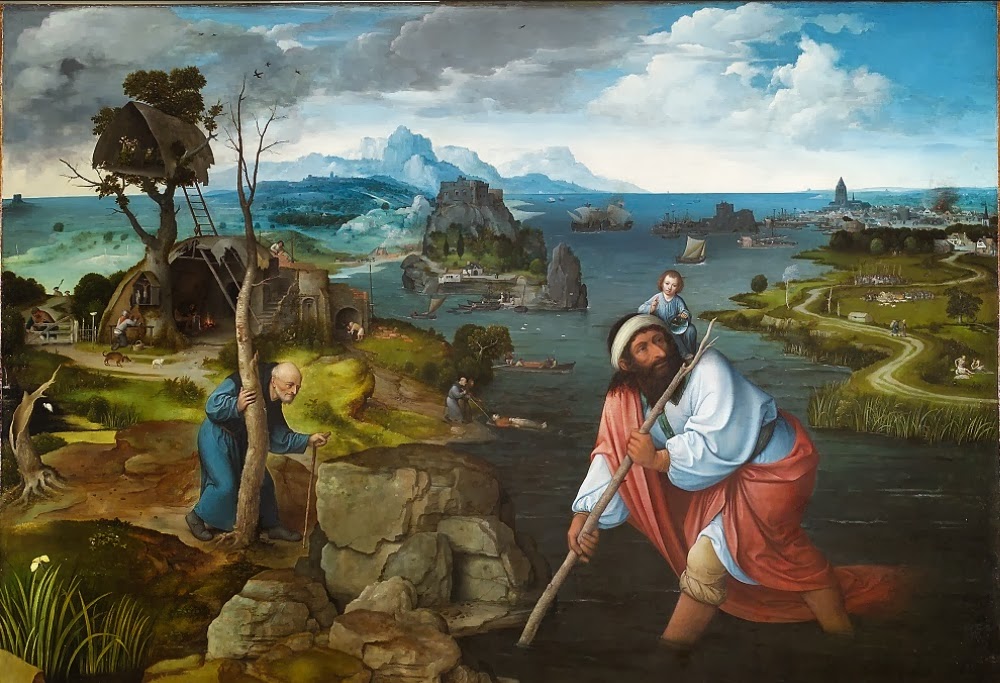

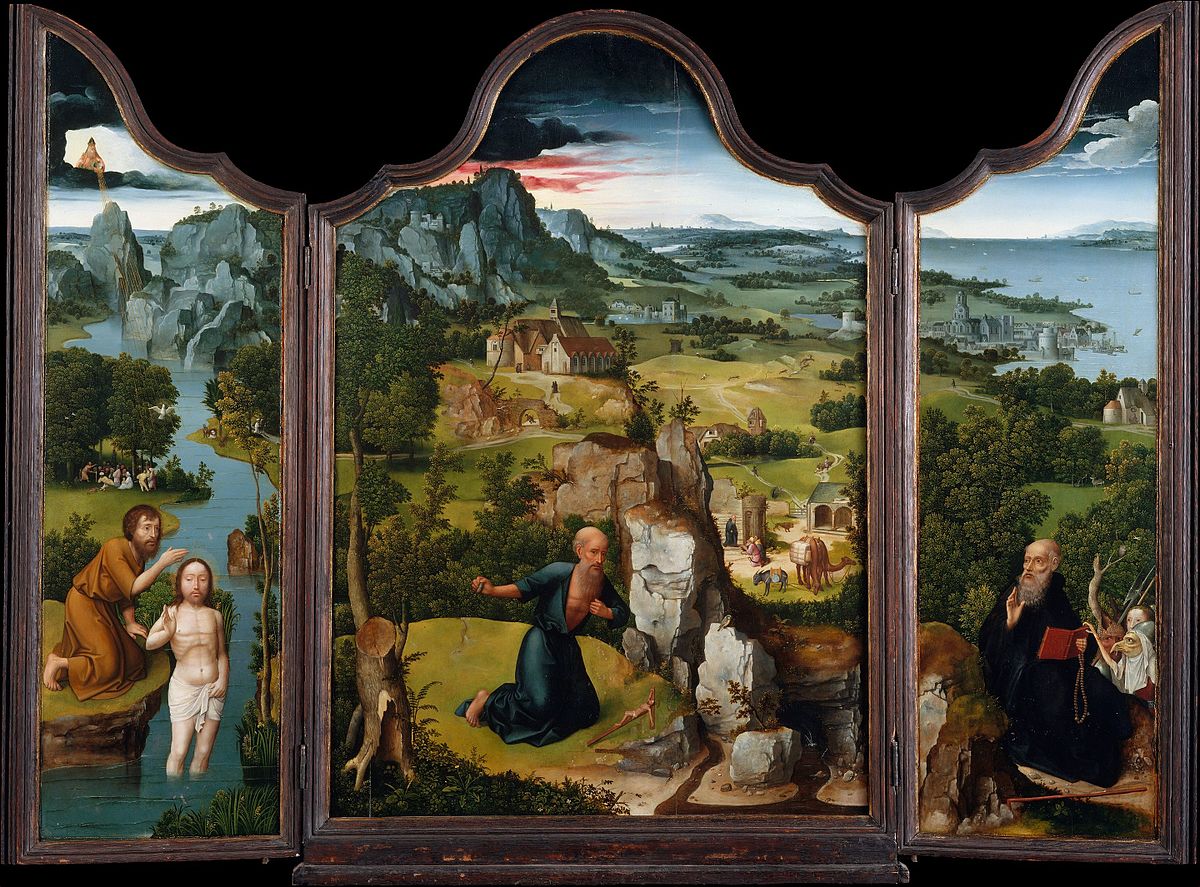




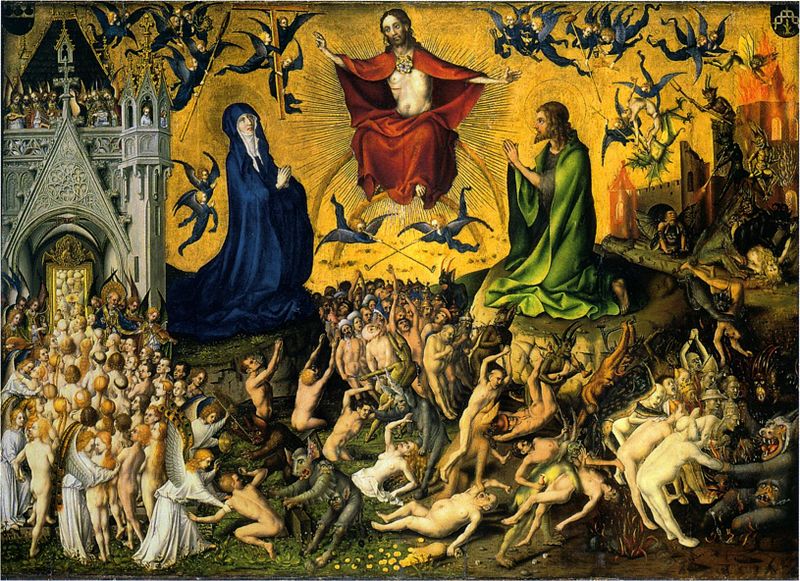







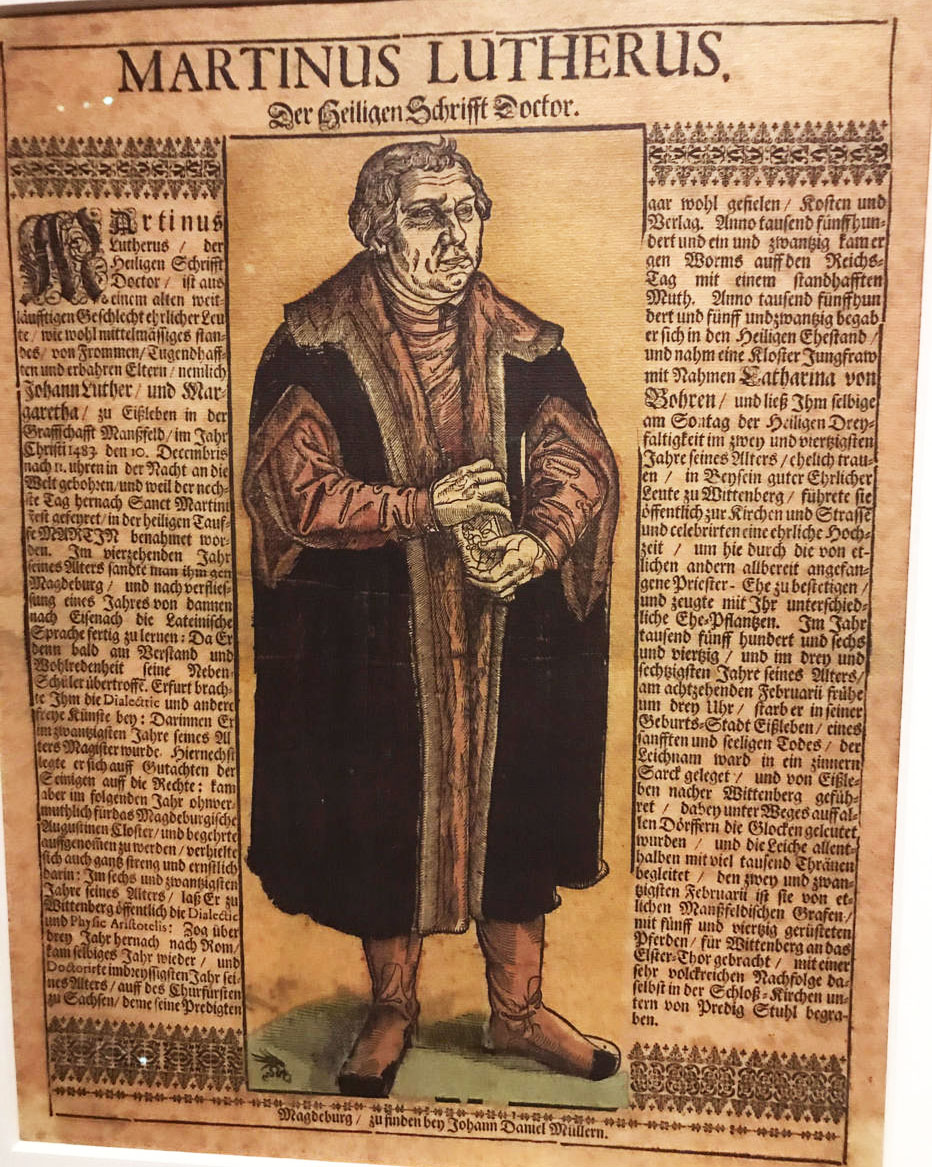















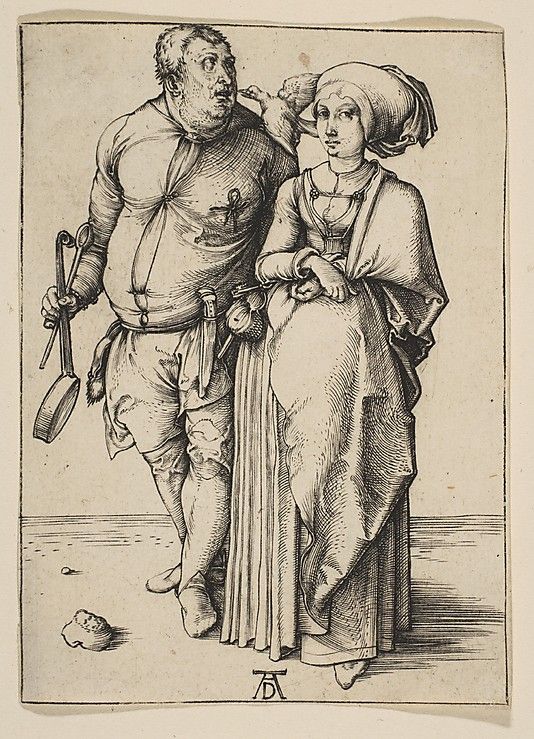




![From a german manuscript namned "Frau untreue (Untrue woman). Artist unknown. Made first half of 16th century. 320 [118v] - Frau Untreue](https://vulgarcrowd.files.wordpress.com/2016/07/frau-untreue.jpg)


























